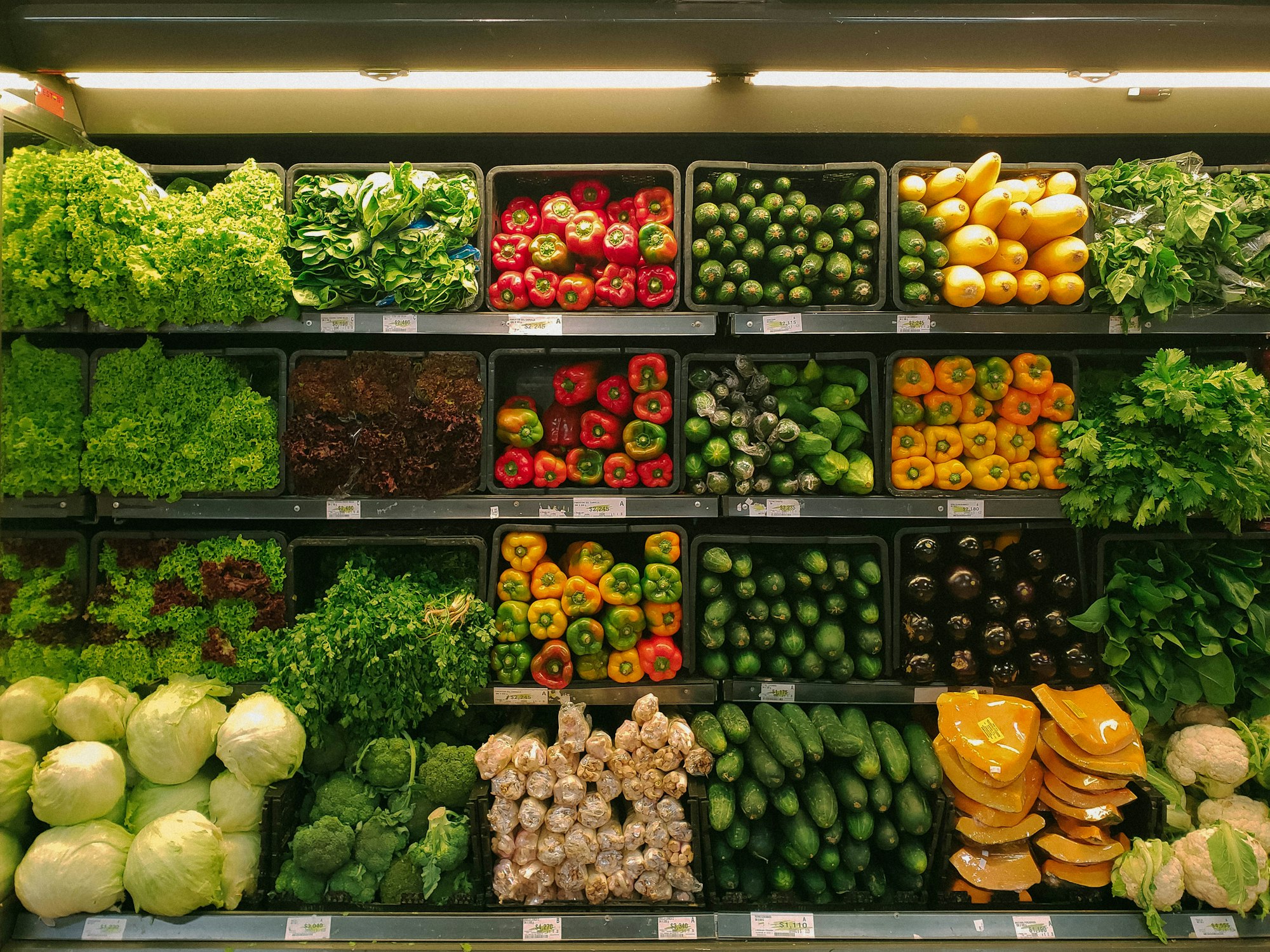Wow - you must have an army to feed”! 4 mindful ways to shop, budget and preserve food for your family
Nearly every time I shop I have a full cart. I try to shop without my children, now that 4 of my 5 are in school full time - which allows more room in my teeny tiny push buggy, but grocery shopping for a family of 7 and 16 animals (most of which eat fresh produce and fruits) can be a daunting adventure. If you’re like me, you may feel like you live at your local market, even if your only feeding yourself and your suckling babe.
Here are helpful ideas and mindful methods to feel more confident in your food budget and extend the life of what you bring home each week.
According to 2020 data from the Bureau of Labor Statistics the average family consisting of two parents and two children is estimated to spend $4,942 annually or about $412 per month for U.S. households. So if you are a family of six, your food budget would be roughly $600 per month.
1.Create a food budget- then stick to it- A good place to start is to subtract 50% from your net (after taxes) income and then subtract your needs (other than groceries) from that number. This will give you a remaining amount for you to start planning what you have left to spend on groceries. If it’s not enough, and you find yourself with bare cupboards and shelves in your fridge before the end of the month, you may need to adjust your spending in the “wants", dining out, and leisure categories to compensate for your lack of groceries. Here’s an excellent resource to create a budget.
There are far reaching rules and suggestions for living within a budget and staying on task with your financial goals each month, especially as you are feeding and raising growing children. One such rule is called the 50-20-30 rule. The rule states that you should spend up to 50% of your after-tax income on needs and obligations that you must-have or must-do. The remaining half should be split up between 20% savings and debt repayment and 30% to everything else that you might want.
You could also adapt the 80-20 budget; where you set aside 20% of your income for savings and utilize the remaining 80%. This helps us save and prepare for the big purchases of a: home, car, insurance, college fund, unseen medical expenses and retirement.
2. Buy on sale, clearance tags, in bulk, and use coupons
This does not necessarily mean shopping for things that you don’t need or want, but searching for the sale and clearance stickers allows you to get a better price for the same item. This might mean waiting for a particular item that you may want or need until it goes on sale or gets that colorful clearance sticker slapped on it. It might also mean that you need to freeze and preserve some of the food that might go bad faster than you can consume it when you buy large quantities of produce, milk and meat.
You don’t need to shop at big box or giant name brand stores to buy in bulk. You can search for local markets, smaller grocery chains, in-between stores and websites that help the community to avoid waste. Often the more we buy, the more we waste- because we can’t seem to eat through it fast enough before it needs to go to the compost pile, so use coupons to buy what you may purchase most often and be prepared to take extra time each week to preserve and stash away food you will need in the immediate or more distant future. When you find an item on sale or marked down, consider extending your monthly food budget to purchase more and save it for a rainy day. Having a designated area that is free from moisture, excess heat, rodents and other pests in your garage, basement, pantry or barn can act as a food storage so you can shop from your home for your families favorites and prepare yourself for unforeseen changing events in your life.
3. Invest in the life of your food with food preservation tools
There are so many benefits to thinking ahead of timing and planning for the future when buying your food. So the next time you are in any grocery store, I encourage you to purchase foods that you can use in these preservation methods; Freezing, Canning, Pickling, Fermentation, Dehydrating, and Curing.
When you think of how you can use food preservation methods to have your food work for you longer than the typical week, your family can spend less time shopping and more time enjoying the “ fruits of your labor.”
See our article “Invest in the life of your food with 6 food preservation tools" for more details on how you can stretch your food budget and grow your food storage through all seasons of the year.
4. Enjoy meal planning and dining with your children
My sister , the founder and creator of Birth made Mindful, has a beautiful chalk board in her pantry that she uses for her weekly meal planning. This gives her and her husband the list of dinners that they will prepare and create together, or individually as they go about their busy weeks with work, family, church and social obligations. If one parent is not able to cook a specific night, the other parent knows what is expected for dinner and what ingredients are already purchased in the fridge and pantry.
You don't have to start planning your whole week all at once. You can start small and delegate ideas, tasks, the daily preparation and even shopping to your spouse, partner, and older children. Using the food you already have, or have used for another meal allows you to use all ingredients in a large package and let no spice, condiment, or sauce go to waste. It might be wise to schedule at least one night where you don't have a plan a dinner meal at all and you can eat leftovers, freezer meals, or even eat out or pick up something for your family to eat.
Meg Saliva, a nutritionist from Cambridge, suggests that when you are planning a meal you need to think about the following principles:
Adequacy- enough energy, major macronutrients (protein, fat, carbohydrate), micronutrients (calcium), and fluid that our bodies need to function optimally and to support life-long health.
Balance - All of the major food groups are present in meals and adequate amounts of carbohydrate, fat, and protein are included in each meal.
Variety-switch things up to help ensure your body gets exposed to a variety of phytochemicals and micronutrients.
Moderation-Learning when and how to say "that's enough" can sometimes take practice, so if you need help, ask for it (and I would include being a good example for your children by showing them when you are full and how to say no to even your favorite foods when you are at your limit.)
Nourishment- We eat for enjoyment, to socialize, because we're intrigued by something new and for reasons besides hunger and biological need.
Food is a place to enjoy one another, to build bonds and strengthen core values. Meal planning and preparation is the place where we get to experiment with newness or return to favorites that bring us comfort and pleasure.
We can and should eat fun, thrilling foods and teach our children that the more we enjoy budgeting, buying on sale, preserving food for the present and the future in new and healthy ways, and knowing what foods we have and how we can use them creativity and with advanced planning, the more our food will serve us in our mindful quest for nourishment and health.
Article by Christina Packard

Christina is the mother of 5. She is a writer and educator for Made Mindful, LLC. Along with gardening, embroidery, and playing the piano and trumpet, she finds thrills in anything DIY or craft related.


